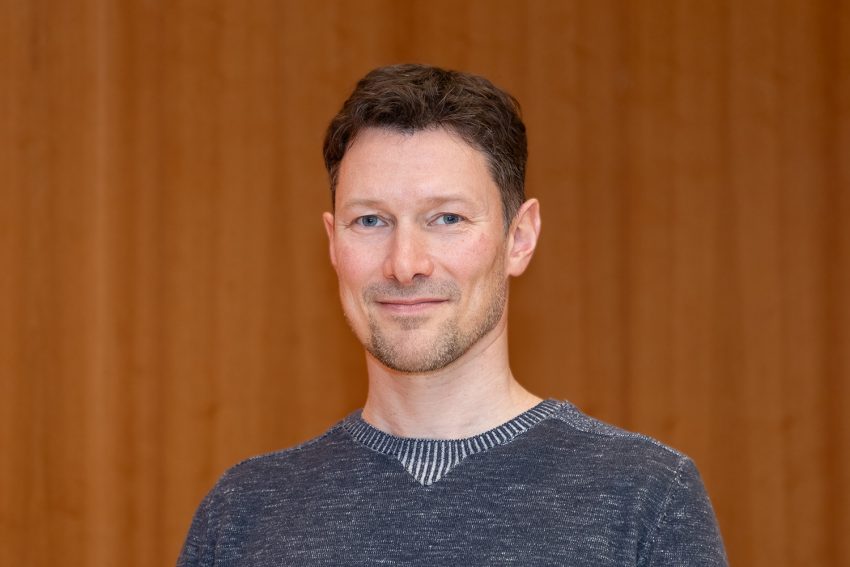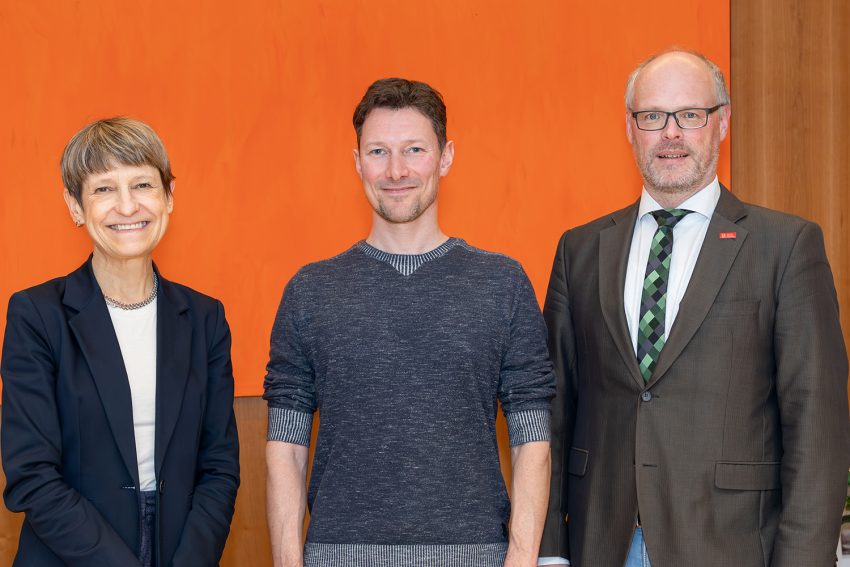From the Arctic to the peatlands of Germany Torsten Sachs is the new professor for land-atmosphere interactions
Torsten Sachs is returning “a little bit home”. He studied geo-ecology at TU Braunschweig, where he had already held a junior professorship in atmospheric physics. He has now been appointed joint professor for land-atmosphere interactions by TU Braunschweig and the German Research Centre for Geosciences. In this interview, Professor Torsten Sachs talks about his research on the greenhouse gases CO2 and methane in Arctic permafrost regions and German peatlands.

Torsten Sachs is the new professor for land-atmosphere interactions. Photo credit: Kristina Rottig/TU Braunschweig
Professor Sachs, why did you choose TU Braunschweig?
There were three main reasons: It simply suited me professionally, personally and “historically”.
Professionally, because I can complement and extend the existing topics in geoecology with my specialisations, and at the same time there are some methodological overlaps, so there is a very good connection.
On a personal level, because the previous collaboration during my junior professorship and in the TransTiP graduate programme was very pleasant and smooth. In addition, compared to other universities that came into consideration, I perceived the greatest interest and motivation here to realise this joint appointment.
And “historically”, because after my studies here and a detour to Alaska, which was originally planned for two semesters, but then got a bit out of hand due to exciting opportunities and finally took me to the Alfred Wegener Institute for Polar and Marine Research (AWI), ETH Zurich and then to the German Research Centre for Geosciences in Potsdam (GFZ) for my PhD, I have now come full circle and returned home a little.
What exactly do you do in your research? How would you explain your work to someone who is not familiar with the subject?
I study the interaction between the Earth’s surface and the atmosphere, mainly the exchange of heat, water (vapour) – for example through evaporation – and the greenhouse gases CO2 and methane.
We have been studying this for many years, for example in the permafrost regions of the Arctic, where there is concern that strong warming of the Arctic could cause previously frozen carbon to thaw and decompose into CO2 or methane and be released into the atmosphere, where these greenhouse gases would then act as a positive feedback driving further warming. Unfortunately, our long-term research site in Siberia, which is unique in the world, has become inaccessible due to the Russian war of aggression, so we are currently moving to West Greenland.
However, the majority of the study sites are now in Germany, where we are focusing on greenhouse gas dynamics in rewetted peatlands and peatlands intended for rewetting. The background to this is that drained peatlands are responsible for around seven per cent of CO2 emissions in Germany, and that significant amounts of CO2 can be avoided very quickly by raising water levels. This has been increasingly recognised in recent years and long-term projects are currently being funded by the German Federal Ministry of Food, Agriculture and Consumer Protection (BMEL) and the German Federal Ministry for the Environment, Nature Conservation, Nuclear Safety and Consumer Protection (BMUV), among others, to show how these areas can be used in a peat-friendly way and which new value chains can be established for “wet agriculture” on peatland soils.
As greenhouse gas mitigation is one of the main objectives of rewetting, a robust quantification of emissions (and CO2 uptake through photosynthesis) is particularly important. But there is also plenty of scope to investigate exciting scientific questions about ecosystem development, the influence of extreme events, vegetation dynamics and much more. After all, rewetting, like drainage before it, is initially a massive disturbance from which “new” ecosystems emerge. And we can follow their development scientifically from the very beginning.

At the appointment of Professor Torsten Sachs with our President Angela Ittel and Professor Klaus Thiele, Dean of the Faculty of Architecture, Civil Engineering and Environmental Sciences. Photo credit: Kristina Rottig/TU Braunschweig
What led you to do research in this field?
It was born out of necessity and then a combination of curiosity, interest and opportunity. My first course at the University of Alaska was called “Research Methods”, and to pass it you had to design a final project – formulate hypotheses, design appropriate experiments to test them, choose the right statistical methods, and so on. I didn’t know that from Braunschweig at the time. I can’t remember exactly where the idea came from, but I came up with a permafrost warming experiment using greenhouses and heating loops in the ground to investigate the release of greenhouse gases under different climate change scenarios.
But not being familiar with the American system or the requirements for such homework, I took the finished paper to the Alaska office of the US Geological Survey (USGS) on our campus and asked the first person in the corridor if what I had written met the requirements for a university homework assignment. Apparently it did – anyway, the person then secretly decided that I needed a master’s thesis project with “real” scientists. I must have forgotten to mention that I just wanted to get two semesters of experience abroad – more like a holiday – before writing my thesis in Braunschweig. Suddenly, people from the National Water Resources Research Programme at the USGS Federal Center in Denver called me and wanted to know when I would have time to fly to Denver to discuss a project with them. That’s when I got curious about where this was going – and here I am.
You head a research group at the German Research Centre for Geosciences (GFZ) in Potsdam and have recently become a professor at TU Braunschweig – how do you manage to combine both?
In addition to my duties at the GFZ, I am mainly involved in teaching and working on other committees. The latter is made much easier by WebEx, and I am currently in the process of handing over some of the functions I have accumulated at GFZ over the last ten years, so the bottom line is that not too much will change. Teaching will take place in somewhat larger blocks where possible, as was the case when I was a junior professor, and the supervision of PhD students has worked well in recent years in a demand-driven mix of online meetings and reciprocal visits lasting several days. Ultimately, the distances are manageable and I’m not the only one travelling from Potsdam or Berlin, so one or two projects can even be developed on the ICE (train) or the A2 (autobahn).
What are the advantages of a joint appointment?
A joint appointment offers the best of both worlds: the non-university partner can only offer its executives a professorship through a joint appointment, and access to young academics is primarily through the university. The university, in turn, can raise its profile through the additional courses and close cooperation, and also gains access to extensive specialised and large-scale infrastructure. Joint appointments can therefore be a good link between the institutions.
For me personally, the most important thing is that I can support young scientists from teaching to doctoral studies and, thanks to the still quite acceptable financial situation in the Helmholtz Association, I can offer opportunities that might otherwise be more difficult to realise.
How would you describe your working day in three words?
Different every day.
